How Does Your Garden Grow?

A tale of two Columbia gardeners.
photos by Bruce Meentemeyer, Jenna Rozum, & David Massey
Shelter Gardens and the MU campus: two Columbia landmarks known for their floral lusciousness. To both the passersby and frequent visitors, these landscapes are a delight to the senses, but for two Columbia women and their crews, they are also a full-time job.
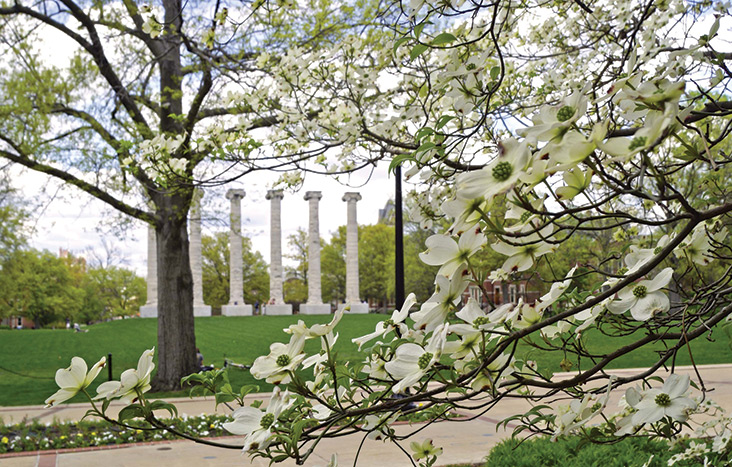
“In 1974, Scotty Garret [then head of maintenance and grounds at Shelter] came up with the idea of a community garden to provide a place for people to just slow down and enjoy nature,” says Katrina Monnig, superintendent of grounds at Shelter Insurance. The five-acre garden now yields over 300 varieties of trees and shrubs and more than 15,000 annuals and perennials.
Katrina heads up a crew of five full-time employees in the grounds department and an additional two seasonal employees in the summer. She started working at Shelter in May of 2012, when she took over for her aunt, Joy Long.
“I have always enjoyed working with plants,” says Katrina. “I enjoy seeing the new plants that come out and being able to try them.”
Katrina joined Shelter after working as a landscaper at MU for 13 years, largely under the guidance of landscape gardener Marsha Bower. “Marsha taught me a lot about the plants before she lost her fight with cancer,” Katrina says.
It was also at MU that Katrina worked with another knowledgeable Columbia gardener, Jenna Rozum, manager of horticulture.
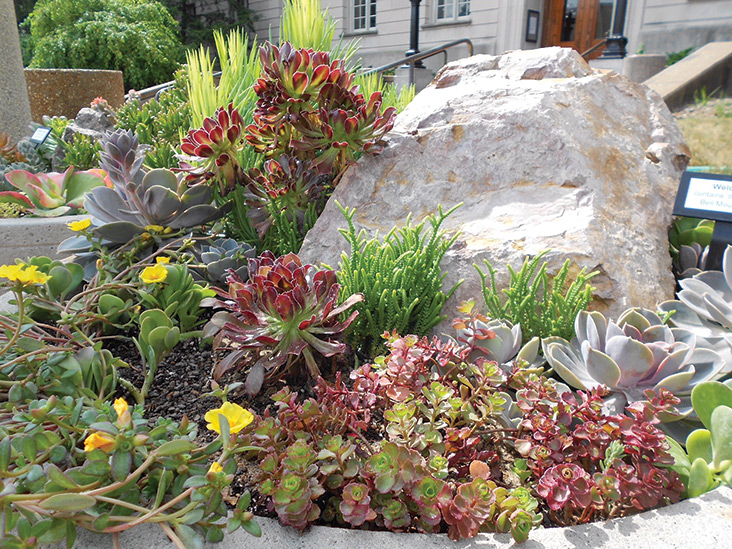
“My grandparents had a garden when I was young — they still do — but I never considered it a career,” says Jenna. “My senior year of high school, I needed one more elective, so I settled on landscape horticulture solely because I thought it would be easy. I remember how much I loved identifying trees, and that’s when I decided to pursue a degree in the field.”
Her passion took root and Jenna started working at a local nursery as well as at the horticulture center at Illinois State University, where she received her master’s degree in agribusiness with an emphasis in horticulture in 2009.
Jenna took over Marsha’s position as the landscape gardener, supervising the herbaceous (flower) garden crew at MU in 2010. She took a break for a few years to work at the Missouri Botanical Gardens in St. Louis, returning in 2016.
“I work with a team of wonderful groundskeepers who each have designated areas of campus in which they work and perform garden maintenance,” says Jenna, who is responsible for all tree, shrub, perennial and annual plantings on campus. “I also help the department with educational and fundraising events, give garden tours, and design the seasonal color displays around campus.”
Jenna’s department consists of 35 employees — 29 full-time and six student assistants — who maintain 752 acres of the main campus.
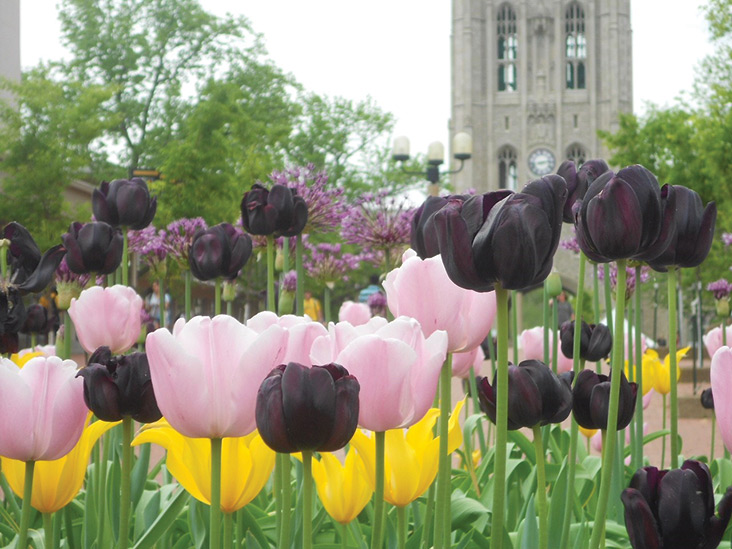
Planning the Plantings
When deciding which varieties of flowers to plant, “I take into consideration the sun and shade flowerbeds,” says Katrina. “We also change up the look with different design layouts and colors just to keep it interesting.”
When researching the different types of trees and shrubs, Katrina and Jenna choose varieties that are hardy here in Missouri, and they pay particular attention to those that are disease- and pest-resistant.
“There are a number of factors to take into consideration: hardiness, light availability, form, function, appearance,” Jenna says. “On campus, we additionally look at pedestrian traffic patterns, where nearby underground utilities may be, and the potential for building or construction projects that may impact a site.”Jenna and her crew also try to vary the number of species they have in any given area to avoid monocultures.
Both Jenna and Katrina mix annuals and perennials to keep things eye-catching year-round.
“We have several beds in the [Shelter] gardens that are planted with tulips in the spring, and then we plant annuals,” says Katrina. “The other beds throughout the garden have a mixture of trees, shrubs, and perennials.”
MU also has a mixture of hardy plants and the seasonal, annual plantings around campus that change three times each year.
“The Eighth Street Circle annuals are particularly popular at graduation,” says Jenna. “We also design perennial gardens that are often memorials. We take pride in honoring alumni, friends, and others in this way.”
The MU team also propagates their own stock of large tropical plants for displays. The trees, shrubs, and perennials come from a variety of vendors across the state while the bedding annuals are grown for them by Jeff Oberhaus, owner of Vintage Hill Farm in Franklin, Missouri.
“This way we’re able to get exactly what we want,” says Jenna, “which enables us to design seasonal displays that are new and exciting each year.” Jeff also grows the majority of plants Katrina and her team use at Shelter.
“In the fall, I have some blank blueprints of the annual beds, and we design the next summer’s display,” says Katrina. “I will then put together a list of plants for Jeff to grow at Vintage Hill.”
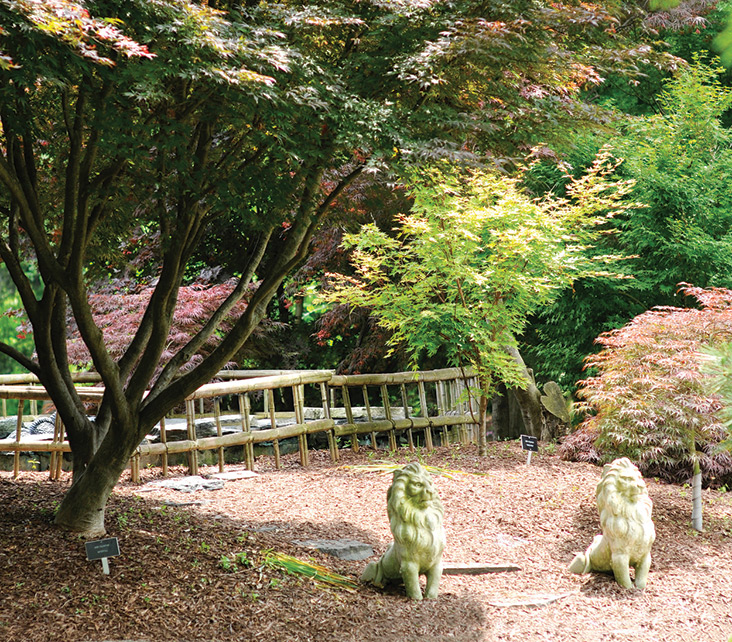
Year-Round Maintenance
“For us, things are seasonal, and you get into a routine year after year,” says Jenna. “For example, in the spring, we’re cleaning up beds, cutting down grasses, fertilizing and seeding the turf. In the summer, because Missouri tends to be so hot and dry, we spend a lot of time watering annuals, as well as new trees and shrubs. The fall is dominated by leaf cleanup, and in the winter is when we do most of our mulching across campus.”
Katrina and the Shelter crew have also maintained a seasonal regimen. “Before we plant, we till up the beds,” says Katrina. “We will then plant and water them, usually mixing in a water-soluble fertilizer as we water. In the winter, we will winterize the irrigation. We will also mulch all of the areas during the winter and spring.”
In addition to tending to the plants, Jenna’s team is also responsible for the coordination of snow removal on campus in the winter, which tends to be a time of rest for the garden beds themselves.
“In terms of winterizing, we leave as much perennial plant material [e.g., grasses, spent flower heads] as possible for winter interest,” says Jenna. “It isn’t until late winter or early spring that we clean up most beds to prep them for a new season.”
Last year MU invested in a ride-on aerator and a spreader, which Jenna says has made it much more efficient for the turf crew to aerate, seed, and fertilize campus.
“We use a variety of different tools to help us perform our jobs,” says Jenna. “We rely on irrigation for certain turf areas across campus, as well as watering the annuals beds in the summer. Over the past few years, we have reduced our staff and have relied more on native plants in an effort to help reduce maintenance and watering.”
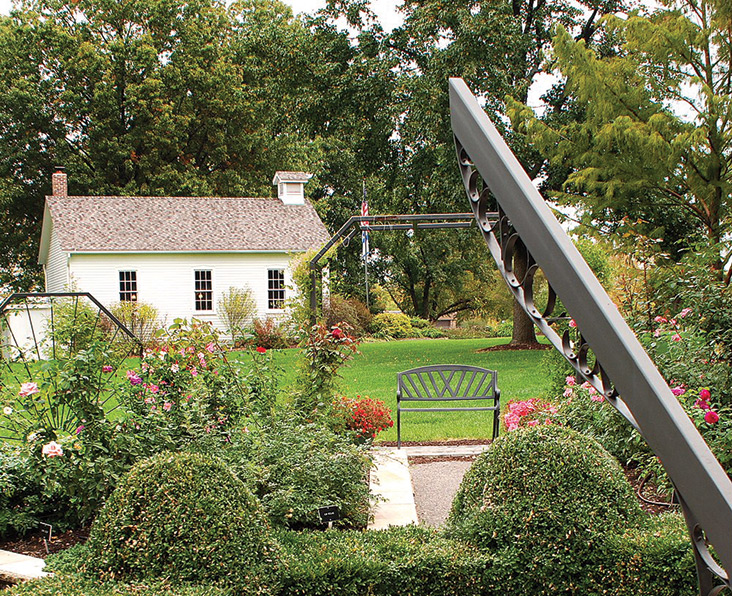
Words of Wisdom
When it comes to gardening, the pros give sound advice.
Jenna emphasizes keeping in mind the soil condition and exposure of your site. “The easiest mistake to make is planting something in a location it’s not suited for,” says Jenna. “Plants will ultimately look poor when planted in the wrong spot.”
A key rule that Katrina and her crew adhere to is making sure they put the taller plants in the back and the shorter ones up front. She is also a firm believer that Mid-Missourians can help achieve a basic, attractive landscape by simply mowing their yards and pulling weeds.
“Pull a few weeds, a little at a time,” says Katrina. “Then you won’t be spending hours at one sitting. As long as you show your plants a little care, they will usually do their best.”
Jenna agrees: A little effort goes a long way.
“First, I would be honest with yourself about how much maintenance you want to do and understand that no garden is maintenance-free,” she says. “For myself, I find doing a little bit each day really helps, whether that’s pulling weeds, planting flowers, or trimming. Small tasks daily make a big difference in keeping your garden in check and preventing large amounts of maintenance later.”



